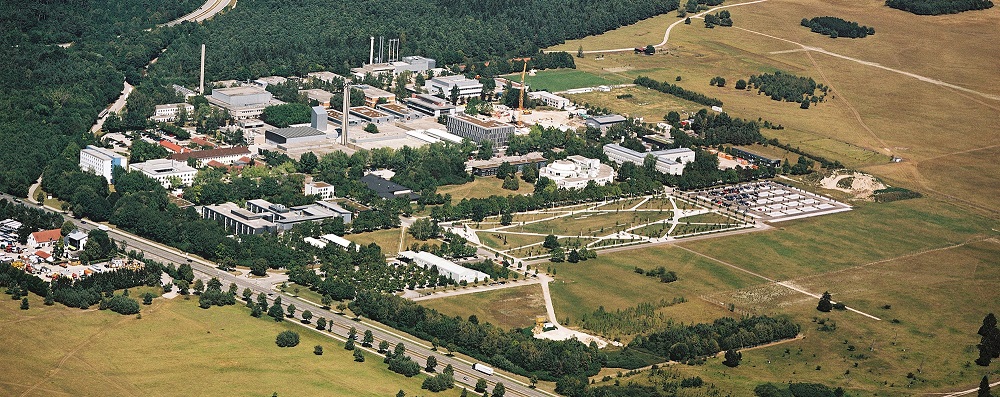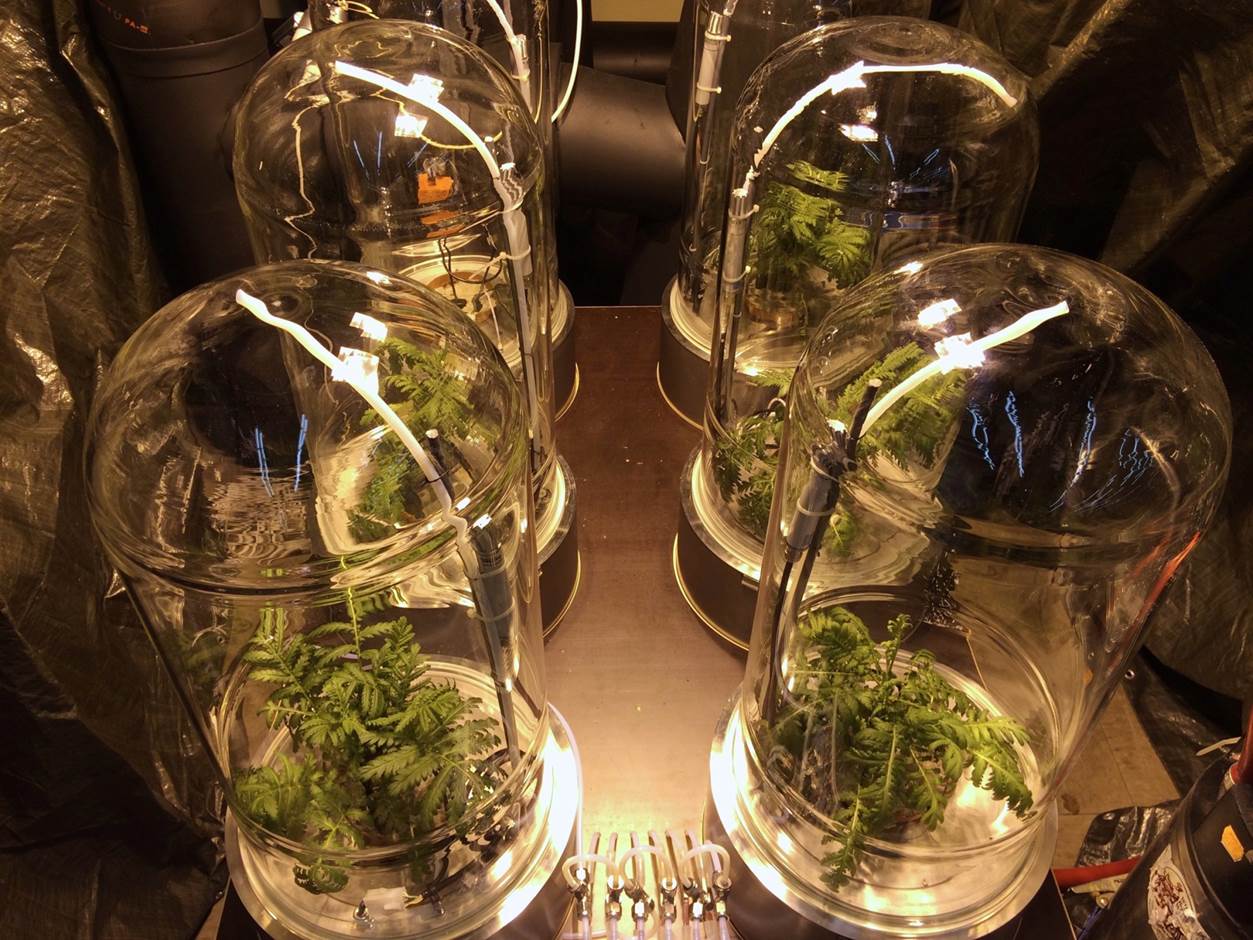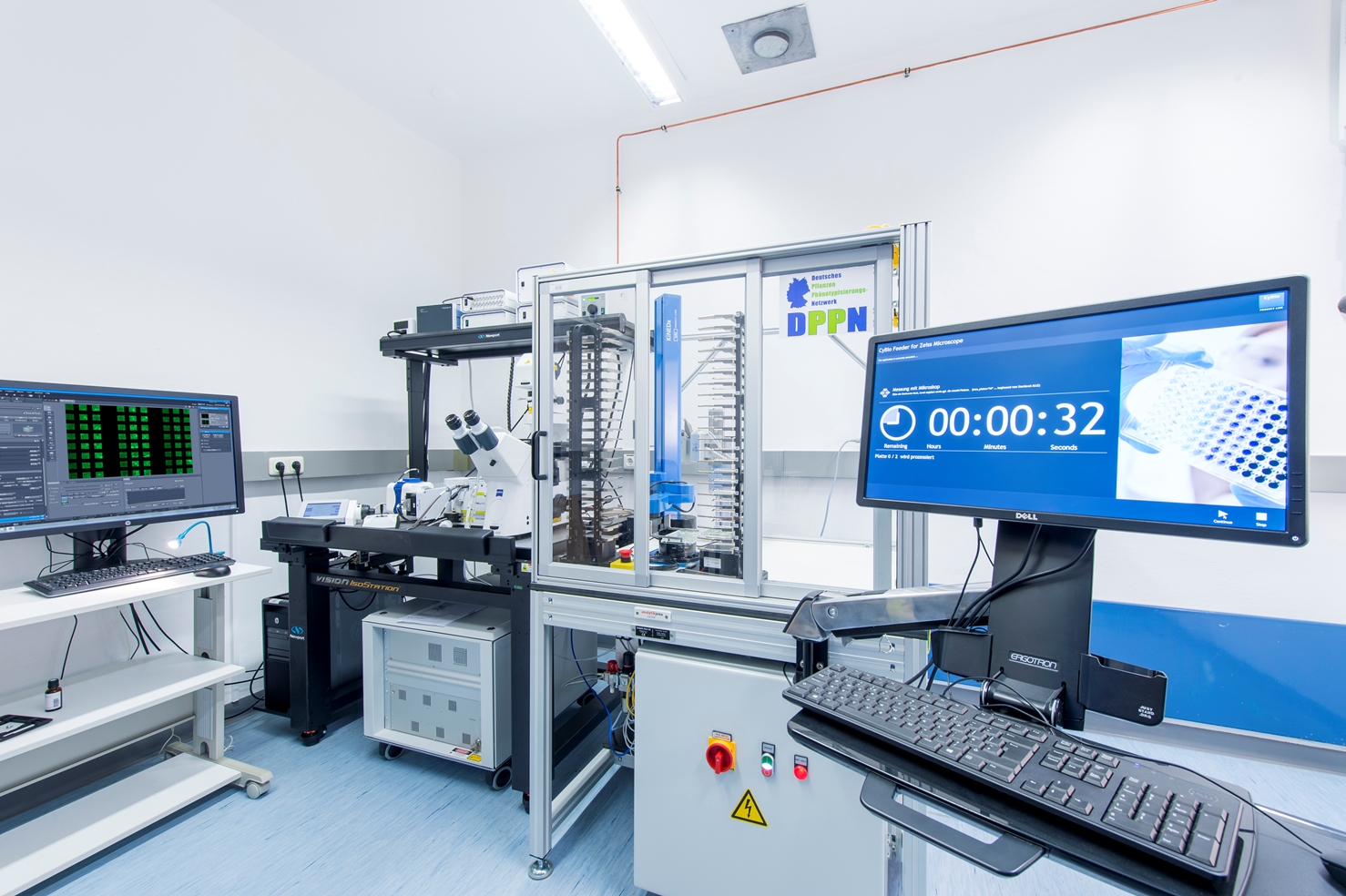Infrastructures and facilities at Helmholtz-Zentrum Munich, HMGU
The Institute of Biochemical Plant Pathology (BIOP) of the Helmholtz Zentrum München (HMGU) explores natural defense mechanisms, growth and fitness of plants, as well as the efficient use of resources in response to environmental cues. Focus is placed on the molecular mechanisms that allow plants to respond and adapt to biotic as well as abiotic factors. The associated Research Unit of Environmental Simulation, EUS, acts as a research platform for controlled environment simulations in exposure chambers, solar simulators, research greenhouse within the institute and in external collaborations. EUS’s scientific focus is on the functional identity and role of volatile organic compounds (VOCs) emitted by plants, especially in plant defense and stress response.
 Luftaufnahme vom Helmholtz Zentrum München in Neuherberg
Luftaufnahme vom Helmholtz Zentrum München in Neuherberg
Copyright: Helmholtz Zentrum München
BIOP is also a partner and offers its facilities in the European Plant Phenotyping Network (EPPN). Within the DPPN network, novel and medium- to high-throughput phenotyping facilities will be established with focus on plant pathogen interaction. Besides growth and developmental phenotypes, volatile organic compounds (VOCs) and intracellular fluorescent markers for plant-pathogen interactions will be analyzed in high resolution.
For further information and Access please contact the following persons:
Uta von Rad, Dr. v.rad@helmholtz-muenchen.de or
Stephan Dräxl, Dr. stephan.draexl@helmholtz-muenchen.de
The different infrastructure equipment is catagorized into following groups:
Technologie Plattform Patho
Plant Volatiles | |
|---|---|
 | |
| more details | |
| Scope | Single Plant / Array |
| Location of the facility | Growth chamber / stationary |
| Screening object | Single plants |
| Plant size/Species | Up to 70 cm in height / diverse |
| Trait and parameters | Profiles of emissions of plant volatile organic compounds (VOCs) and photosynthesis |
| Method | Collection (Air samplingsystem) and analysis (PTR-ToF-MS) of plant emissions |
| Capacity/Throughput | 48 air sampling cuvettes in parallel / day |
| Timeline | coming soon |
High-throughput Confocal microscopy |
Laser scanning confocal microscope | |
|---|---|---|
 | ||
| more details | -detailed information will be available soon- | |
| Scope | Organ | Organ |
| Location of the facility | stationary | |
| Screening object | Single plants | Single plants |
| Plant size/Species | Seedlings (up to 2 weeks)/small plants | Small test plants and seedlings |
| Trait and parameters | Automated phenotyping of fluorescently labelled plants in 96-well format | Detailed analysis of intracellular or tissue-specific signaling transport routes |
| Method | Fluorescence Microscopy | |
| Capacity/Throughput | High throughput | Single samples |
| Timeline | in preparation | in preparation |
Technology Platform Root
Root Phenotyping | |
|---|---|
| -detailed information will be available soon- | |
| Scope | Organ |
| Location of the facility | |
| Screening object | Single plants, small up to full grown crop plants |
| Plant size/Species | |
| Trait and parameters | Automated phenotyping of root architecture |
| Method | |
| Capacity/Throughput | High throughput |
| Timeline | in preparation |
Technology Platform Root/Shoot
Sensor-to-Plant | |
|---|---|
| -detailed information will be available soon- | |
| Scope | Organ |
| Screening object | Single plants, small up to full grown crop plants |
| Plant size/Species | |
| Trait and parameters | Automated phenotyping of shoot and root architectures in parallel |
| Method | |
| Capacity/Throughput | High throughput |
| Timeline | in preparation |
